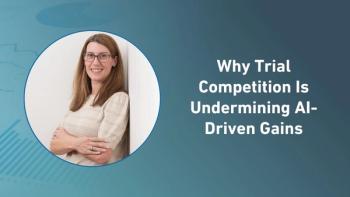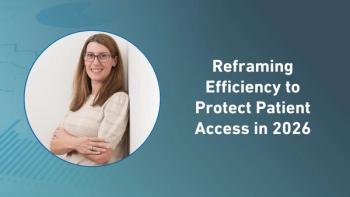
- Applied Clinical Trials-09-01-2009
- Volume 0
- Issue 0
eCTD Training Efforts
A panel of early eCTD adopters address training efforts on the evolving format.
eCTD Training Efforts
In our June 2009 article, "Common Ground for eCTDs" a panel of early eCTD adopters discussed their challenges to implementing eCTD. Here, they address global acceptance, and training and skill sets needed.
None of the roundtable participants reported negative experiences with global submissions.
Carol Rutkowski, senior director, global regulatory operations for Shire Pharmaceuticals, said: "We've sent eCTDs to all the countries we have applications in and they are accepting them. From experience, we've learned that since there's not a standard or the standard is different in each country, we're finding if you push the envelope, they will take one standard. If we say, 'We use the Shire standard, will you take this?' They often do."
Albert Edwards, PharmD, RAC, director, regulatory operations for Takeda Global Research & Development Center, said, "Similarly, we've sent out half a dozen or so eCTD formatted applications throughout the world, and haven't received comments, at least thus far."
Training
For authors used to writing in a certain way, eCTD is a change to their thinking due to the granularity and lifecycle management components of the eCTD. The eCTD experts recommend training the internal authors and publishers to help transition from paper to eCTD.
Laurie Henricks, senior director, global regulatory affairs and medical writing, Quintiles, agreed. "You aren't just throwing it over the wall. There needs to be a lot of training. Not just one-time but ongoing training."
At Takeda, they've established a number of hands-on processes to help their authors transition to the new eCTD process. For example, a special prefix number on a helpdesk was instituted so the person to triage the call would route it to two experts. "We said we weren't going to solve it for you, but we will help you with it and be in your office within an hour to work with you on this," said Edwards. He said that process worked well, and went on for approximately six to eight months after implementation. "We didn't implement the process and say 'good luck.' We said we will be here and we will help you solve any issues with it."
Rutkowski said it helps if employees get a big picture of regulatory and drug development. After that, training is the key for her group.
As of December 2008, the FDA had accepted a record high of just under 3500 eCTD submissions for the month, comprising approximately 30,000 for the year.—Lisa Henderson
Articles in this issue
over 16 years ago
Applied Clinical Trials Digital Edition - September 2009over 16 years ago
The Spotlight Falls on Indiaover 16 years ago
eClinical Software: September 2009over 16 years ago
Into the Aftermath of M&Aover 16 years ago
EMEA and FDA Team Up on GCPover 16 years ago
Does Size Matter in Partnershipsover 16 years ago
An Assessment of Adaptiveover 16 years ago
Business and People Update September 2009over 16 years ago
Global Development Challenges Sponsorsover 16 years ago
Regulating the Generic Drug ProcessNewsletter
Stay current in clinical research with Applied Clinical Trials, providing expert insights, regulatory updates, and practical strategies for successful clinical trial design and execution.




